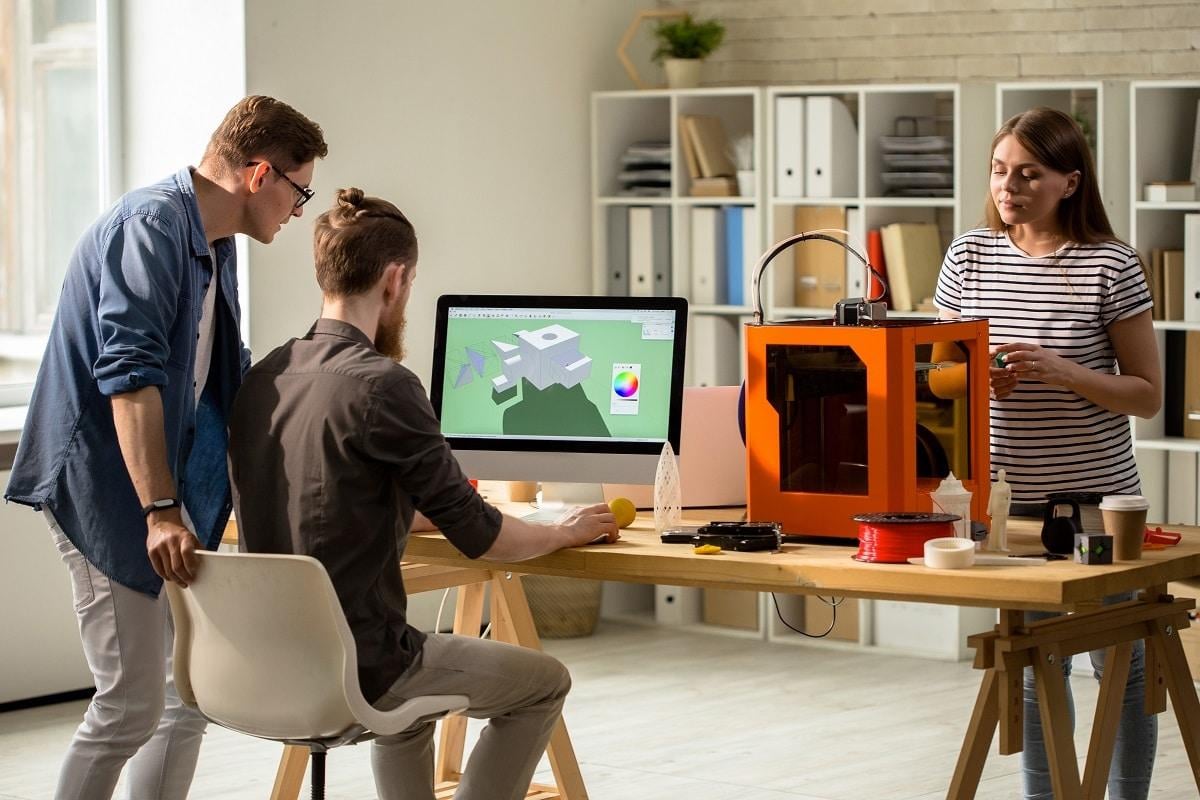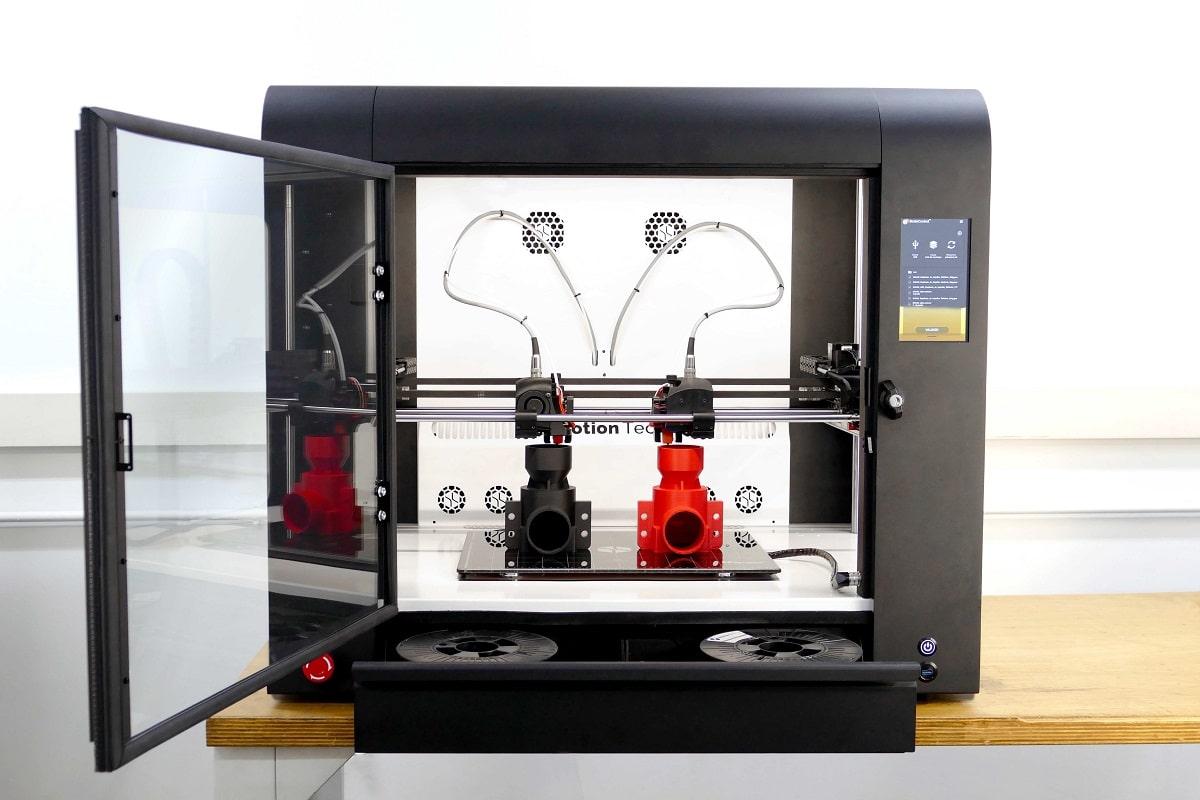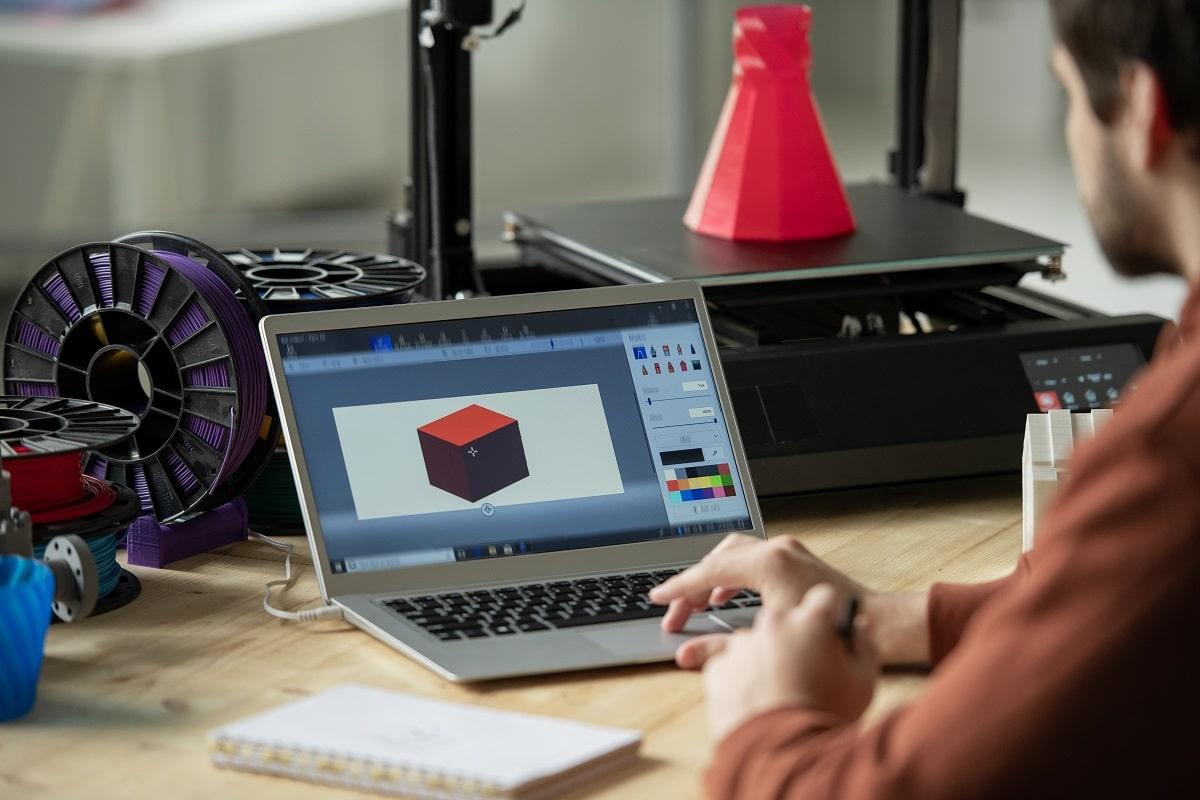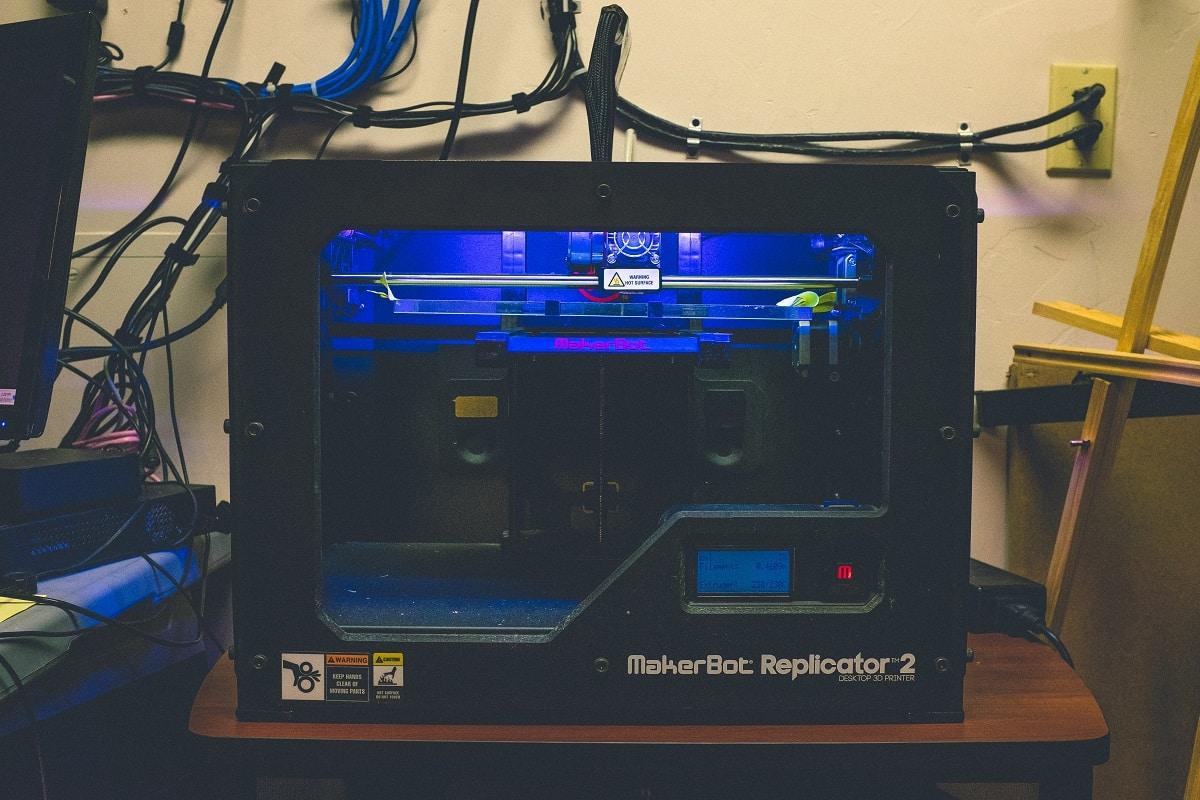While the best 11X17 printers for architects help print the initial copy of your design on paper, you can use 3D printers to create an exact replica of your 3D model.
You may wonder how this benefits engineers, or perhaps you wish to know how 3D printing can be incorporated into your workflow as a mechanical engineer. Well, for starters, it streamlines the manufacturing processes of prototypes.
And naturally, engineers gravitate towards additive manufacturing, as having a preliminary design produced in just a few hours is convenient and cost-efficient. 3D printers are generally fast and very accurate, making them ideal for integrating into the engineering workflow.
As of now, every sector is co-dependent, providing each other with resources or necessary assistance as per necessities. 3D printing shows promise of shifting this balance and perhaps making it healthier. Engineering will become the root of all that 3D printing touches, whether health, transportation, construction, education, or art.
Boasting multi-platform compatibility, it is steadily becoming one of the rising industries in the world. Here’s how 3D printing is a forerunner of the future.
The 3D Printing Process

Additive manufacturing can be broadly classified into three steps—modeling, printing, and finishing. The manufacturing process can be started with a filament, a 3D printer, and a slicing software. And the materials chiefly involved in additive manufacturing are thermoplastics, resins and ceramics.
That said, here’s a brief overview of the 3D printing process.
1. Model Creation And Export
Using computer-aided design software, you can create a 3D printable model. These models can be created using any program that allows 3D modeling. From a simple polygon to intricate designs, you can make anything that comes to your imagination.
These models can be saved in two formats–STL and AMF. STL is the older file format that collects data based on triangulation of the model’s surface. And, AMF is the newer format that stores information using curved triangulations. Other file formats may also be used such as .obj, .ply, and .3mf.
The STL or AMF file has to be checked for errors before it is exported. These errors can be holes, face normals, self-intersection, noise shells, manifold, or overhang issues. Once fixed, the model can be downloaded or exported for 3D printing. The geometrical information stored in these files is then run through slicing software.
2. Choosing Materials
You can 3D print any material with a workable solid-state. The list goes on–plastics, powders, acrylics, resins, and carbon fiber. Thermoplastics are the most common desktop printing material, while things like wood and metal are often used in the building industry.
Additive manufacturing has seen a rapid expansion in the last few years, so there are plenty of options to choose from. Once you’ve selected a material, you can define the parameters, such as the size and placement of the printed object.
3. Slicing Software
The STL or AMF file is processed by a slicing software that converts your model into thin layers, making a G-code file afterwards.
Slicing software provides you options to define settings, such as print resolution, nozzle temperature, and print speed. It enables repositioning and resizing the model, viewable in a preview mode. The G-code file mentioned above contains instructions specific to your 3D printer, which starts the layer-by-layer deposition.
4. Printing
Once all the model errors have been resolved and every setting is specified, 3D printing is ready to begin. The 3D printer will create your 3D model layer-by-layer in some time. Each layer ranges from 16 micrometers to 100 micrometers in thickness.
Like printers that print on paper, the resolution of a 3D printer is also measured in dots per inch. And if the model involves complex structures, it could take a few hours to finish.
Once the construction of a model is finished, you may move on to the finishing process.
5. Finishing
The final step of additive manufacturing involves many quality checks to ensure that imperfections are eliminated from the creation. As with traditional manufacturing methods, the finishing action will result in a smoother result.
Now, the ways of refinement are nearly as varied as the materials that can be 3D printed. One method involves a slightly larger model being printed and then filed down to perfection, using both additive and subtractive processes for the final result.
The second utilizes chemical vapor to smooth out any irregularities. And other methods involve internal supports, which are removed after the print reaches its ultimate shape.
Benefits Of 3D Printing
3D printing has opened the doors to a more streamlined manufacturing process compared to traditional methods. The benefits of additive manufacturing stretch beyond saving time and money.
1. Rapid Prototyping
With 3D printers, you can make and refine designs swiftly. Each stage of the prototyping process can be wrapped up quickly, and within hours, you’ll have your design ready to go. This improves the rate at which a prototype can be refined into the final design.
2. Waste Reduction
Traditional manufacturing can end up wasting a good portion of the raw material. With metal, recycling the residual bits consumes resources and time. This is why traditional methods are also known as subtractive manufacturing.
Since 3D printing works on layers and only utilizes what is needed, the process is called additive. You won’t have to clean up after a 3D printer since there won’t be anything to clear out.
3. Cost Reduction
3D printing is a cost-effective alternative to small-scale productions. Manual work is minimal, and the printers take up less space than traditional machines. Since the process produces less waste, the overall costs of production may be reduced significantly.
4. Versatile Production
Designs that would be impossible to create by traditional means can be 3D printed. A 3D printer can use various construction materials to create one object, allowing you to experiment with the different textures as a result.
There are no limits to what you can print with a 3D printer. Since designing is primarily done using software, editing a pre-existing blueprint is convenient and can be done anytime. Even if a design is particularly complex, 3D printers will construct it without a hitch.
Moreover, 3D printers are accessible to people of varied skills, something that cannot be said for traditional means. Engineers have the skillset essential to use 3D printing tech effectively, making them a crucial part of development and production.
5. On-Demand Printing
3D printers save space. They don’t occupy much to begin with, and they eliminate the need to keep an inventory stock. Models are stored in computers and can be printed whenever the need arises.
6. Sustainability
Since parts can be made quickly and without any waste, the impact of 3D printing production is notably low. A lesser number of things would need transportation during the process, and factories will use less energy for creation.
How Engineering And 3D Printing Work Hand-In-Hand

Engineers can make the most out of additive manufacturing tech. Every field has its unique input and impact on the printing process. And here’s how an engineering degree will help you bring about a new age of 3D printing possibilities.
1. Mechanical Engineering
Mechanical engineers have been crucial in making the 3D printing process on par with traditional manufacturing methods. They have the technical and creative skills to expand the limits to what can be 3D printed.
In fact, mechanical engineers may also use the tech to construct complex parts that contain many smaller components. It’s faster and eliminates some steps of manufacturing completely.
2. Material Science And Chemical Engineering
Material science will significantly aid the manufacturing processes by developing low-cost and durable materials. Though materials like plastic, wood, concrete, and metals are already being used in 3D printing, material scientists work on optimizing the product quality and quantity even further.
3. Electronic Engineering
Electronic engineers may use the 3D printing tech to construct complex circuitry and parts, further maximizing the efficiency of the production process.
4. Civil Engineering
Civil engineers can use 3D printed parts and equipment to reduce the cost of construction by a significant degree. Entire structures can be made with 3D printing methods. Since the process involves minimal human contact, it can be utilized in more dangerous environments. Learning how to draw architecture diagrams using Visio may also help in furthering the 3D printing process.
Making The Most Out Of 3D Printing
As mentioned before, prototyping is faster than ever with the advent of 3D printing. But, the applications don’t end there. Many industries have begun to adopt 3D printing as their primary manufacturing method, and the number is rising steadily. The technology has a little something for every field, and here’s how.
1. Food Industry
The technology has advanced far enough to print food layer-by-layer. Organizations and individuals alike are actively working towards this goal. It involves deposition of layers of food paste through a food-grade nozzle. Some 3D printers have customizable onboard recipes, allowing people to create food with specific nutritional content. Naturally, 3D printing saves a lot of water that’s generally consumed in conventional preparation methods.
With 3D bioprinters, we may soon witness a new era of printed food. Using cells taken directly from an edible source, food is made from the ground-up. Once the tissues have cultivated, they are then incubated and cured, making them ready for consumption. The technology is still in its infancy, and so it needs to be developed further to make it available for use.
2. Education And Skill Development
Incorporating 3D printing into education will help students reap many benefits. They will no longer have to rely on pictures to learn, thanks to rapidly created prototypes. Having models to rely on for exploring concepts will help learners immensely.
With the rapid prototyping that 3D printing offers, throwaway models can be created for practicing and developing skill. A future engineer may perform any task that requires repeated use of a specific implement without worrying about wasting resources or raw materials. As time moves on, 3D printing will become more prominent in our lives.
3. Health And Medicine
Prosthetics and aids can be 3D printed at a low cost, bringing them to those who would normally not be able to afford them. Since a prosthesis has to be designed to suit the patient, 3D printing and designing have made it easier to do so with maximum accuracy. Artificial organs may be 3D printed to quickly solve complex issues, such as organ failures, making the process worthwhile for everyone.
A significant application of 3D printing in the medical sector is the creation of Personal Protective Equipment, otherwise known as PPE. The technology is also used to create fast and disposable PPE kits for medical professionals.
Bioprinting is a relatively new concept and it will completely change the healthcare landscape. Using 3D printing to create stem cells that can promote cell growth in the human body shows great potential for the future of healthcare.
It is being looked at for constructing body parts and organs using inkjet techniques. The technology is also known as tissue engineering since it involves layer-by-layer deposition of living cells onto a gel, eventually resulting in a three-dimensional structure.
Medicine can also be created using 3D printers. Since every person has a different reaction to medication, pills tailored specifically to patients can be made with 3D printers. Tablets can be printed quickly using a 3D printed formulation, making them more efficient.
4. Construction
As mentioned before, 3D printed materials reduce construction costs. The quality will be consistently high and the chances of complications will be lowered drastically. Reduced risk, increased yield, decreased waste, and a quicker process are all a by-product of the 3D printing technology.
5. Industrial Applications
Many industries can benefit from the use of 3D printing. Tools can be printed and made ready for use in no time.
The aerospace industry, like the automotive sector, has taken to 3D printing to create complex machine parts. Intricate parts can be designed and developed where traditional means would take too long or cause additional expenses. Spares can be printed with minimal effort and be ready to replace existing ones.
3D printing has also planted its feet in the sensors and actuators industry. The technology looks to replace older creation processes in the future, saving the tedium of manufacturing.
6. Art And Jewelry
Sculpting is a core part of 3D printing. With the aid of digital tools, sculptors will get better control over their artwork. It will also allow the usage of various materials to create art pieces.
The limitations of traditional jewelry are gone with 3D printed ones. Gone are the complexities of traditional methods, which involve painstakingly carving patterns in wax. As mentioned earlier, 3D models can be modified at any time. This gives more modern methods to flourish in the jewelry industry.
3D printers use metals typically used in jewelry to print intricate designs with no complications. The headaches of measuring purity are gone since a 3D printer allows customization of the highest degree. And the results are gorgeous and of high quality.
The Future Of 3D Printing

Seeing the trajectory of modern technology and manufacturing processes, it’s within reason to believe that Sci-Fi will become a reality one day. The improved speed, accuracy, and costs are the most tangible effects we see today. Soon, these will go beyond just increased efficiency.
Combining mechanical engineering with nanotechnology, 3D printing on a microscopic level is now possible. Using processes, such as stereolithography, micro-sensors with complex structures can be printed for use. These tiny sensors used to be extremely expensive and time-consuming but the 3D printing process is now being used to optimize their creation.
The marvels of technology also extend to medical fields, where 3D printing of human tissue is made possible. Growing human tissue in a controlled environment will allow studying complex diseases and possibly finding a cure for them in the future. And, while artificial organs are being printed today, we may see a time when 3D printed organs are devoid of synthetic components.
In a similar vein to how automation changed the aspect of factory production, 3D printing revolutionizes manufacturing. The tech has advanced quite far, and the outlook towards it has seen a turnaround in recent years. Soon, 3D printing will have touched everything our eyes can see.
However, there are limits to what can be done with the technology. There are complexities with legal aspects and difficulties that arise when the technology is unable to perform a specified task. These will be solved in due time.
Such is the nature of human advancement; it requires patience and a lot of trial and error, but eventually, innovation prevails. From the satellites currently in orbit to buildings being made using layers, additive manufacturing looks to be a promising addition to humanity’s repertoire.
The Limitations Of 3D Printing
As of now, 3D printing is a bit of a niche in the manufacturing industry. Rapid prototyping is something 3D printers are significantly better at, but the technology has yet to have a breakthrough in making a small range of parts. The primary reason for this is the time it takes to finish a product compared to traditional methods.
1. The Troubles With Post Processing
Post-processing methods to refine 3D printed objects can slow down production considerably. The subtractive production method mentioned above is performed using water jets, sanding, chemical vapor, etc.
2. A Poor Fit For Mass Production
3D printers can print no more than one material at a time, making them unsuitable for mass production. If a direct comparison is made between traditional and 3D printing processes, the costs of the latter may end up being higher than the former. Depending on their sizes, some products might be better created by traditional means.
3. Limited By The Device’s Size
The product’s build size is also hamstrung by the printer’s size. Should a need to print anything larger arise, the only option to make it would be to construct two separate pieces and fuse them afterwards. This is counter-productive, increasing both costs and time.
4. Legal Problems
Legal issues may also arise, as some will always attempt to counterfeit original products. The better 3D printing technology becomes, the more difficult it would be to tell originals from copies.
However, the troubles with 3D printing will be resolved in the coming years. As the tech shows a high degree of promise, the process’s benefits heavily outweigh the cons.
Why Do Engineers Use 3D Printers Frequently Asked Questions ?
How can engineers push the future of 3D printing technology?
Engineers study techniques and concepts that are directly involved in 3D printing. With chemical engineering, they may create better production materials.
And while mechanical engineering will lead to well-made components and upgrades for 3D printers, electronic engineering will produce better circuitry. If you are an engineer, there’s a good chance you possess a skill that can be applied to 3D printing. Once the tech advances far enough to print circuitry, we may see a rise in electronic innovations.
Are there any quality concerns with 3D printing?
3D printers can construct models without a hitch. They require some touch-ups during post-processing, but the quality will be consistently good. As long as the necessary steps are followed, and the printing resolution is sufficiently high, 3D printed products will have very few quality concern issues.
How is inkjet technology related to 3D printers?
There isn’t much of a difference between Epson Ecotank printers and inkjet 3D printing.
A subset of inkjet printing, the process involves low temperature and pressure liquids being deposited layer-by-layer. Much like inkjet office printers, the printing material is sprayed through a nozzle housed in a print head.
Once a layer has been deposited, it is cured before depositing the next layer. After the printing is complete, the result usually requires finishing. The process is consistent but slow, often requiring a lot of care as well.
Can 3D printers be used to make clothing?
Yes, some fashion designers use 3D printers to design and make garments. Though making these clothing articles eats into budget and time, there exists a niche for such clothing.
Accessories and eyewear can be customized and printed on-demand as well. With the precision that 3D printing brings, some companies have also begun printing shoes for athletes. All-in-all, 3D printed fashion is an area of experimentation at the moment.
Can additive manufacturing replace traditional manufacturing?
The technology is still far away from completely replacing traditional methods. Since 3D printing cannot construct products on a large scale, traditional methods are preferable. There is also the matter of conventional production providing jobs and maintaining a healthy economic balance.

Why Do Engineers Use 3D Printers Conclusion
Among all the technological advancements made in the past few decades, 3D printing may become the most crucial of them all. It holds the potential to revolutionize every aspect of human life.
A ton of articles can be created at a reasonable cost, and best of all, it’s quick and hassle-free. The further this tech evolves, the greater its importance to the general population. An unprecedented number of issues will have a more straightforward solution accessible to everyone.
And if the manufacturing process takes less time and money, the end product is also cheaper as a result.
3D printing is key to humanity’s future with faster prototypes and increased quality. Engineers and scientists are working tirelessly to refine it further, and once their efforts pay off, it will usher in a new era of production.


